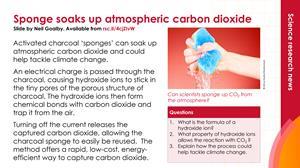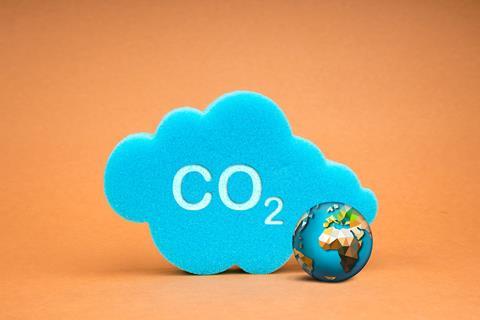New carbon capture method uses low-cost charcoal to absorb and release carbon dioxide with the flick of a switch
-

Download this
Use this story and the accompanying summary slide for a real-world context when studying alkalis or climate change and carbon capture with your 14–16 learners.
Download the story as MS Word or PDF and the summary slide as MS PowerPoint or PDF.
Charcoal ‘sponges’ charged with hydroxide ions (OH-) offer a low-cost, energy-efficient way to capture carbon dioxide directly from air.
The researchers behind the finding decided to explore using activated charcoal for this purpose because it is ‘cheap, stable and [already] made at scale’. The material’s electrical conductivity also permits a rapid release of captured carbon dioxide, allowing the charcoal sponge to be easily reused.
According to the group leader Alexander Forse, capturing carbon from the atmosphere is a last resort. Still, it is something that needs to be investigated due to the scale of the climate emergency.

Hydroxide-charged charcoal
The research team took the less explored route of using hydroxide ions to bind carbon dioxide. ‘It’s very rapid, and more efficient than other methods,’ says Alexander. The secret is ‘sticking’ the hydroxide ions inside the porous (spongy) structure of activated charcoal. The chemists devised a battery-like charging process to stick hydroxide ions inside the charcoal sponge. They use charcoal sponge electrodes and an electrolyte that is full of hydroxide ions. When they apply a voltage, the hydroxide ions accumulate in the tiny pores of the activated charcoal. ‘The material is then ready to capture carbon dioxide,’ says Alexander.
100g of the sponge material soaks up around 1g of carbon dioxide, and it’s easy to recycle and reuse the system many times per day. Camille Petit, an expert in porous materials at Imperial College London, says that the rapid regeneration of carbon dioxide is an important breakthrough. She explains that normally heat is needed to release carbon dioxide from these types of materials. In this case, electricity is the trigger, which could lead to significant energy savings.
This article is adapted from Fernando Gomollón-Bel’s in Chemistry World.
Nina Notman
Reference
H Li et al, Nature, 2024, 630, 654–659 (doi.org/10.1038/s41586-024-07449-2)
Download
Summary slide with questions and the article for context when teaching 14–16 lessons on the alkalis or climate change and carbon capture: rsc.li/3YCedYR
Downloads
Carbon sponge absorbs CO2 from atmosphere summary slide
Presentation | PDF, Size 0.24 mbCarbon sponge absorbs CO2 from atmosphere summary slide
Presentation | PowerPoint, Size 0.41 mbCarbon sponge absorbs CO2 from atmosphere student sheet
Handout | PDF, Size 0.17 mbCarbon sponge absorbs CO2 from atmosphere student sheet
Handout | Word, Size 0.69 mb














No comments yet